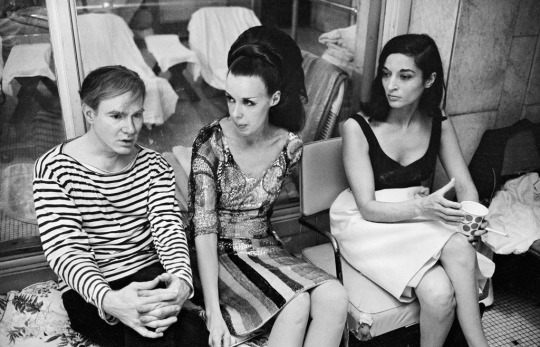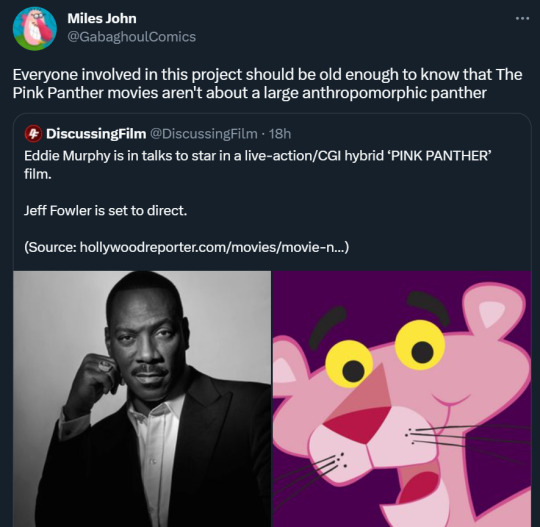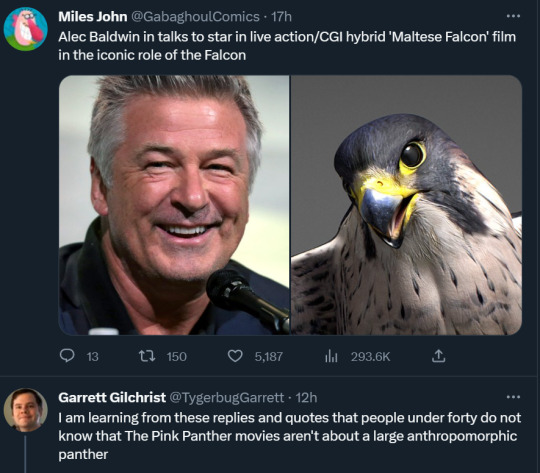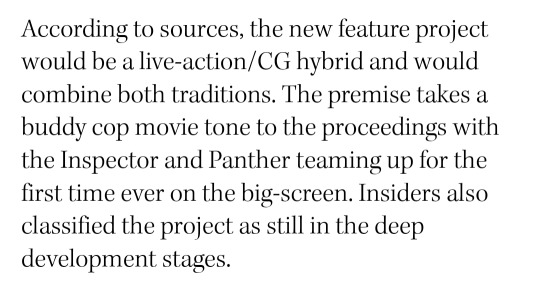#kevin (1965- )
Photo




Kevin McCarthy, Andy Warhol, Marisol, Isabel Nash Eberstadt and Edie Sedgwick during a pool party at Al Roon's Health Club in New York City, 1965.
Photos by Bob Adelman
#Kevin McCarthy#Andy Warhol#Marisol Escobar#Isabel Nash Eberstadt#1965#Edie Sedgwick#1960's#1960s fashion
285 notes
·
View notes
Text

John Lennon recording at Abbey Road, during a session for Rubber Soul, 1965.
ㅡ From the book "The Beatles: British Broadcasting Corporation (BBC Archives)" by Kevin Howlett.
70 notes
·
View notes
Link
They want to cut HEALTH INSURANCE, SOCIAL SECURITY, and MEDICARE, in order to give more tax cuts to the wealthy.
3 notes
·
View notes
Text

Edie Sedgwick and Kevin McCarthy frolic at a party at Al Roon’s Health Club in New York City, 1965
#edie sedgwick#60s icons#60s fashion#60’s pinup#60s aesthetic#60s style#60s vintage#aesthetic#vintage#old school cool
109 notes
·
View notes
Note
As a follow-up to my previous ask, I was wondering if you have any recs for academic nonfiction (whether books or articles) about media studies/fandom history? I just read Textual Poachers by Henry Jenkins, but I’d love something more recent as well! 😁
Fandom history in general? Probably not, though I could go searching through my bookshelves later.
Comic history in general? Yeah, I've got loads of those. Note that all of these are about the American comic industry (and usually about cape comics). I have a few others about non-superhero books or non-American comic history, but most of my knowledge is American comics and thus, most of my recs are about American comics:
Seal of Approval: The History of the Comics Code, by Amy Kiste Nyberg
The Ten-Cent Plague: The Great Comic-Book Scare and How It Changed America, by David Hajdu
American Comics: A History, by Jeremy Dauber
Pulp Empire: The Secret History of Comic Book Imperialism, by Paul Hirsch
Comic Books and the Cold War, 1946-1962: Essays on Graphic Treatment of Communism, the Code and Social Concerns, edited by Chris and Rafiel York
Men of Tomorrow: Geeks, Gangsters, and the Birth of the Comic Book, by Gerard Jones
Slugfest: Inside the Epic, 50-year Battle between Marvel and DC, by Reed Tucker
75 Years Of DC Comics: The Art of Modern Mythmaking, by Paul Levitz and Benedikt Taschen (editors)
75 Years of Marvel: From the Golden Age to the Silver Screen, Benedikt Taschen (editor)
Marvel: The Untold Story, by Sean Howe
The Secret History of Wonder Woman, by Jill Lepore
Wonder Woman Unbound: The Curious History of the World's Most Famous Heroine, by Tim Hanley
"Seducing the Innocent: Fredric Wertham and the Falsifications That Helped Condemn Comics" by C.L. Tilley
"The Great Comic Book Heroes" by Jules Feiffer (Dial Press, 1965)
The documentary Secret Origin: The Story of DC Comics, Kevin Smith's interviews with Neal Adams, and random bits of history like Jack Kirby's interviews are probably the closest we're going to get to a DC equivalent of Marvel: The Untold Story for a long time.
For a little bit of comic fandom history, The Caped Crusade: Batman and the Rise of Nerd Culture by Glen Weldon is an interesting read.
I also have several articles that I've read and used for various papers I've written over the years, but I'll have to go dig through them to find ones that might interest you.
#bri's recs#dc comics#marvel comics#comic history#comic books#asks#some of these are much better and comprehensive reads than others#but they're all at least passably decent reads
17 notes
·
View notes
Text




The 1963 film is a comedy about the theft of the Pink Panther diamond. It had an animated title sequence by Ken Harris for Friz Freleng. Both were Warner Bros/Looney Tunes animators. The Panther is more catlike here. Again he is a representation of a diamond used in the film's plot, which has a telltale flaw resembling a leaping panther.
Peter Sellers' character of the bumbling detective Inspector Clouseau proved popular, and returned in "A Shot In the Dark" (1964). Alan Arkin played a version of the character in 1968 which was less successful.
The animated Pink Panther character was refined further by Ken Harris and Richard Williams in "Return of the Pink Panther," in 1975, which established this as the title for the film series, and made the Panther "more elegant." Tony White animated the character for "The Pink Panther Strikes Again" (1976), for Richard Williams. Sellers returned again for Revenge of the Pink Panther (1978).
Friz Freleng (with David H. DePatie) did a series of animated shorts with the Pink Panther character in 1964 and 1965, after Warner Bros' animation studio had shut down in 1963. Warners tried to start the studio up again, but Freleng found the Pink Panther series more lucrative. These shorts were co-directed by Hawley Pratt who continued the series for MGM/UA. Other directors took over and the series continued until 1978, theatrically and on television.
Inspector Clouseau, and/or variations on him, are also in these cartoons as the "little man" who the Panther torments. There was also The Ant and the Aardvark (1969-1971).
The DePatie-Freleng studio was bought by Marvel comics around 1980. Marvel later produced series like Muppet Babies.
The name was occasionally brought back for TV series "Pink Panther and Sons" (1984-86), "The Pink Panther" (with Matt Frewer voicing the character, 1993-96), and "Pink Panther and Pals" (2010)
After Peter Sellers' death in 1980, there were many unsuccessful attempts to keep the Pink Panther live-action film series going, by Blake Edwards and producers. 1982's Trail of the Pink Panther briefly features a WWII-era Clouseau played by Danny Peacock, and unused footage of Sellers. Curse of the Pink Panther (1983) features Ted Wass. Son of the Pink Panther (1993) featured Roberto Benigni.
In 2006, Steve Martin starred as the bumbling Inspector Clouseau in a remake film of "The Pink Panther," with Kevin Kline and Beyonce Knowles. The film got a sequel in 2009. As is now customary, the films feature the Pink Panther diamond and have an animated title sequence with the animated Pink Panther character.
#the pink panther#this got a lot more reblogs before I added context#but I knew I had to add some context#if you don't add context you drive engagement because people want to say their piece about it
102 notes
·
View notes
Text

THUNDERBALL 1965
Thunderball is a 1965 spy film and the fourth in the James Bond series produced by Eon Productions, starring Sean Connery as the fictional��MI6 agent James Bond. It is an adaptation of the 1961 novel of the same name by Ian Fleming, which in turn was based on an original screenplay by Jack Whittingham devised from a story conceived by Kevin McClory, Whittingham, and Fleming. It was the third and final Bond film to be directed by Terence Young, with its screenplay by Richard Maibaum and John Hopkins.
The film follows Bond's mission to find two NATO atomic bombs stolen by SPECTRE, which holds the world ransom to the tune of £100 million in diamonds under threat of destroying an unspecified metropolis in either the United Kingdom or the United States (later revealed to be Miami). The search leads Bond to the Bahamas, where he encounters Emilio Largo, the card-playing, eyepatch-wearing SPECTRE Number Two. Backed by CIA agent Felix Leiter and Largo's mistress, Domino Derval, Bond's search culminates in an underwater battle with Largo's henchmen. The film's complex production comprised four different units, and about a quarter of the film comprises underwater scenes. Thunderball was the first Bond film shot in widescreen Panavision and the first to have a running time of over two hours.
Although planned by Bond film series producers Albert R. Broccoli and Harry Saltzman as the first entry in the franchise, Thunderball was associated with a legal dispute in 1961 when former Fleming collaborators McClory and Whittingham sued him shortly after the 1961 publication of the novel, claiming he based it upon the screenplay the trio had written for a cinematic translation of James Bond. The lawsuit was settled out of court and Broccoli and Saltzman, fearing a rival McClory film, allowed him to retain certain screen rights to the novel's plot and characters, and for McClory to receive sole producer credit on this film; Broccoli and Saltzman instead served as executive producers.
The film was exceptionally successful: its worldwide box-office receipts of $141.2 million (equivalent to $1,365,200,000 in 2023) exceeded not only that of each of its predecessors but that of every one of the next five Bond films that followed it. Thunderball remains the most financially successful film of the series in North America when adjusted for ticket price inflation. In 1966, John Stears won the Academy Award for Best Visual Effects and BAFTA nominated production designer Ken Adam for an award. Some critics and viewers praised the film and branded it a welcome addition to the series, while others found the aquatic action repetitious. The movie was followed by 1967's You Only Live Twice. In 1983, Warner Bros. released a second film adaptation of the Thunderball novel under the title Never Say Never Again, with McClory as executive producer.
14 notes
·
View notes
Text

Lucille Clifton, daughters, in The Collected Poems of Lucille Clifton, 1965-2010, Edited by Kevin Young and Michael S. Glaser, Foreword by Toni Morrison, Afterword by Keving Young, «american poets continuum» 134, BOA Editions, Rochester, NY, 2012, p. 415
#graphic design#poetry#book#lucille clifton#kevin young#michael s. glaser#toni morrison#american poets continuum#boa editions#2010s
8 notes
·
View notes
Text
shameless headcanons (birthday edition):
(i’m doing every main/some side characters so i’m including confirmed birthdays so this isn’t actually 100% a headcanon)
frank: may 19, 1962 (canonical birthday is that but in 1954, but that’s inconsistent with other storylines and makes his and monica’s relationship seem almost creepy so i changed it)
monica: may 1, 1966
fiona: february 24, 1990
lip: march 29, 1995
ian: may 9, 1996
debbie: december 30, 2000
carl: january 28, 2002
liam: april 1, 2009
veronica: november 26, 1984
kevin: august 17, 1983 (google says 1981 but no)
mickey: august 10, 1994
mandy: july 16, 1995
tami: june 15, 1995
svetlana: october 31, 1994
sandy: february 28, 1996 (i was conflicted on this because she can’t be too much older than debbie, but she and mickey apparently… yk as kids so)
franny: december 4, 2015
freddie: november 30, 2019
yevgeny: march 9, 2013
sheila: march 12, 1965
karen: may 6, 1995
jimmy-steve: december 25, 1989
#shameless#shameless us#shameless headcanons#headcanons#frank gallagher#monica gallagher#fiona gallagher#lip gallagher#ian gallagher#debbie gallagher#carl gallagher#liam gallagher shameless#mickey milkovich#mandy milkovich#karen jackson#tami tamietti#kevin ball#veronica fisher#jimmysteve#svetlana yevgenivna#franny gallagher#freddie gallagher#sheila jackson#yevgeny milkovich#sandy milkovich
33 notes
·
View notes
Text

Brian Jones in the locker room of the gym of Georgia Southern College, Hanner Gymnasium, Statesboro, Georgia. Taken prior to the The Rolling Stones performance there on May 4, 1965.
© Christopher Kevin Delaney
18 notes
·
View notes
Link
“By handpicking Tucker Carlson, Speaker McCarthy laid bare that this sham is simply about pandering to MAGA election deniers, not the truth,” Mr. Schumer wrote. “Tucker Carlson has no fidelity to the truth or facts and has used his platform to promote the Big Lie, distort reality and espouse bogus conspiracy theories about Jan. 6.”
1 note
·
View note
Link
Kindergarten behavior from a truly vile woman,
1 note
·
View note
Text
100 Albums To Understand Muse - Part 8 [STYLE Series #004 - Muse (August 2010)]

MEW
Frengers
(2003)
World debut of the Danish band, boasting melancholic melodies, the transparent high tone voice of Jonas Biele and guitars that, like Muse, grew up on The Smashing Pumpkins and the Pixies. Their latest release, 'No More Stories…….' succeeds in building a dynamic world with a more progressive experimental spirit. -S
MILES DAVIS
Pangaea
(1975)
A masterpiece of the so-called ‘electric period’ of the 1970s. If you think it's ‘jazz’, you'll be surprised. Basically, the cool and sophisticated worldview of this album is the opposite of that of the passionate Muse, but I think there are similarities in the ‘once in a lifetime’ energy that pervades the band's live performances. -M
MONIQUE HAAS
Debussy : Suite Bergamasque / Deux Arabesques / Children's Corner
(1995)
Debussy is a composer that all piano players have a keen interest in. The images that emerge from his poetic melodies are simple, yet they have an impressionistic intensity that leaves a strong impression on the listener's heart. He is also one of Matthew's favourite composers. Enjoy the limpid sound with no ill effects. -M
MY BLOODY VALENTINE
Loveless
(1991)
The second album from MBV, led by roaring guitar master Kevin Shields, and a milestone in shoegaze, still influencing everything from acoustic to neo-shoegaze. Whispering vocals float gently between walls of dissonant, layered guitar noise. It will leave the listener in a trance and lead them into a dreamlike world. -I
MY CHEMICAL ROMANCE
The Black Parade
(2006)
US alternative punk band that recognises a variety of influences from Queen to punk. The band made their breakthrough in Japan with this album. Muse toured the US with this album in 2007 as a frontliner. When Muse took the stage at Wembley Stadium in the UK a few months later, they fronted the band in return. -H
NED'S ATOMIC DUSTBIN
God Fodder
(1991)
A prime example of the ‘gleeful rock’ that dominated the UK indie scene in the early 90s. The first album, featuring snarling twin basses, blistering fuzz guitars, danceable driving beats and sweet and sour melodies, was a #4 hit in the UK. In their heyday, the three Muse members were in secondary school and Matthew's first gig was with the Neds. -I
NEW ORDER
Low-Life
(1985)
Formed by the remaining members of Joy Division after Ian Curtis (vo) committed suicide. The band's melodious bass was a distinctive feature, and it swallowed techno, disco and later house, and used synths extensively. The killer 80s synth-pop tune 2 shines with its piercing uppercut. -I
NINA SIMONE
I Put A Spell On You
(1965)
A classic album from the Philips era by a singer-songwriter who transcended genres such as jazz-blues and R&B. Muse covered ‘Feeling Good’, a standard that has been taken up by many different faces, but Matthew was introduced to it by Nina's version. The title track featuring Screaming Jay Hawkins is also full of atmosphere. -S
Translator's Note: [presses on a single G5 piano key in a half note]
#Muse#The Resistance era#Mew#Miles Davis#Monique Haas#My Bloody Valentine#My Chemical Romance#Ned's Atomic Dustbin#New Order#Nina Simone#my scan#translation#STYLE Series#STYLE Series 004
6 notes
·
View notes